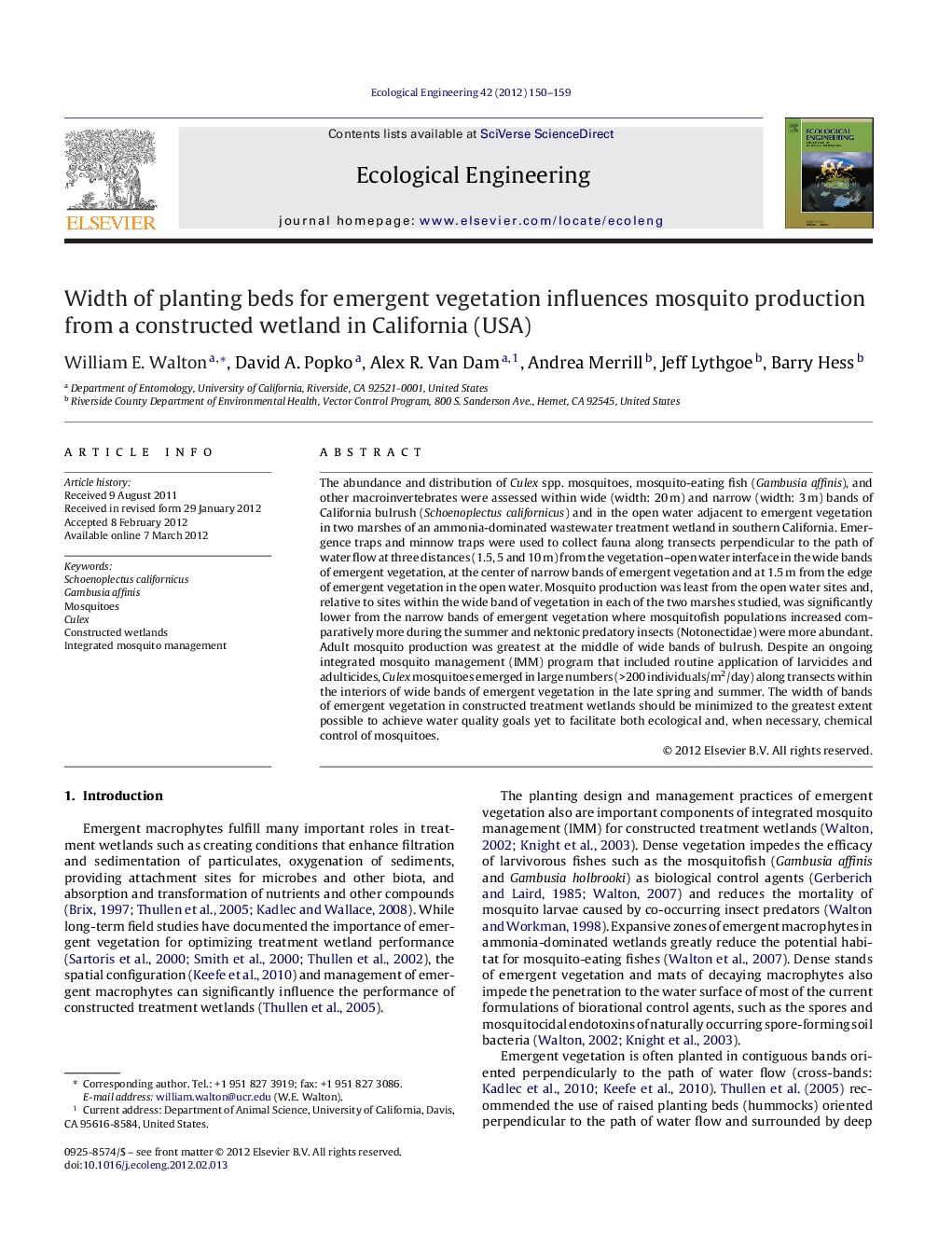| Article ID | Journal | Published Year | Pages | File Type |
|---|---|---|---|---|
| 6302769 | Ecological Engineering | 2012 | 10 Pages |
Abstract
The abundance and distribution of Culex spp. mosquitoes, mosquito-eating fish (Gambusia affinis), and other macroinvertebrates were assessed within wide (width: 20Â m) and narrow (width: 3Â m) bands of California bulrush (Schoenoplectus californicus) and in the open water adjacent to emergent vegetation in two marshes of an ammonia-dominated wastewater treatment wetland in southern California. Emergence traps and minnow traps were used to collect fauna along transects perpendicular to the path of water flow at three distances (1.5, 5 and 10Â m) from the vegetation-open water interface in the wide bands of emergent vegetation, at the center of narrow bands of emergent vegetation and at 1.5Â m from the edge of emergent vegetation in the open water. Mosquito production was least from the open water sites and, relative to sites within the wide band of vegetation in each of the two marshes studied, was significantly lower from the narrow bands of emergent vegetation where mosquitofish populations increased comparatively more during the summer and nektonic predatory insects (Notonectidae) were more abundant. Adult mosquito production was greatest at the middle of wide bands of bulrush. Despite an ongoing integrated mosquito management (IMM) program that included routine application of larvicides and adulticides, Culex mosquitoes emerged in large numbers (>200 individuals/m2/day) along transects within the interiors of wide bands of emergent vegetation in the late spring and summer. The width of bands of emergent vegetation in constructed treatment wetlands should be minimized to the greatest extent possible to achieve water quality goals yet to facilitate both ecological and, when necessary, chemical control of mosquitoes.
Related Topics
Life Sciences
Agricultural and Biological Sciences
Ecology, Evolution, Behavior and Systematics
Authors
William E. Walton, David A. Popko, Alex R. Van Dam, Andrea Merrill, Jeff Lythgoe, Barry Hess,
